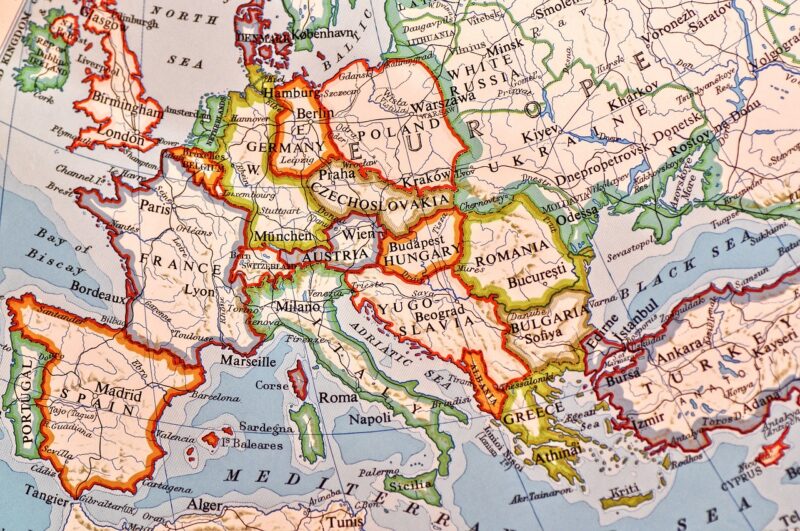Why Certain Countries Have Extremely Complex Subway Maps
November 11, 2024

Subway systems are a lifeline for urban commuters around the world, providing a means of transportation that can deftly navigate the complexity of city infrastructure. However, for some cities, the subway maps appear as intricate puzzles that can intimidate even the most seasoned traveler. The complexity of these maps is not merely a reflection of the number of lines and stations but also a result of historical, geographical, and socio-political factors. In this article, we will analyze why certain countries have extremely complex subway maps and what makes them unique.
1. Historical Development of Subway Systems
Many subway systems were developed over decades, often starting in the early 20th century. For example, the London Underground, which began operations in 1863, evolved over a century and a half, integrating multiple lines and systems.
In cities like Tokyo and New York, the subway was built at different times by different entities, leading to overlapping lines and routes that complicate the overall map. As a result, even simple changes in plans—like the integration of new lines or the repurposing of old ones—can create confusion.
This historical layering is evident in maps where several lines serve the same area at different heights (e.g., express versus local routes) or diverge to serve multiple neighborhoods, leading to cluttered and complex representations that can baffle new riders.
2. Geographic and Demographic Challenges
The geography of a city significantly impacts the design and complexity of its subway system. In cases where cities have rivers, hills, or other natural barriers, subway lines often take circuitous routes to avoid these obstacles. For instance, in cities like San Francisco, steep hills force the subway to navigate constant elevation changes, which contributes to a more complex layout.
Moreover, the demographics of a location can also dictate the intricacy of its subway system. Cities with dense populations require an extensive network of lines and stations, which naturally complicates the subway map.
In regions where urbanization has taken off in recent years, like in parts of China, rapid expansion can lead to complex interconnections as new lines are built to connect emerging neighborhoods, which might not have been accounted for in the older maps.
3. Intermodal Transport Integration
Subways in some countries are designed to serve as part of a broader transportation ecosystem, including buses, trams, and ferries. In these cities, complex connections between different transit modes are meant to create seamless travel experiences. However, this integration often translates into intricate maps.
Consider the subway systems in cities like Paris, where lines integrate with extensive bus networks and suburban train services. While this is beneficial for overall efficiency, it can make the map overwhelming for users unsure of which route they need to take, particularly when traveling to lesser-known neighborhoods.
4. Visual Representation Choices
Map design plays a crucial role in the perceived complexity of subway systems. The way in which lines, stops, and connections are visually represented can either help simplify the experience for riders or, conversely, add layers of confusion.
Some subway maps prioritize geographical accuracy, while others take a more abstract approach for clarity. For example, the famous “Walkman” map of Tokyo, while colourful and visually appealing, can confuse passengers due to its overwhelming information density.
On the other hand, London’s Tube map is revered for its iconic design that sacrifices geographical accuracy for clarity, demonstrating how effective map design can aid easily navigation, even if the system is complex.
5. Cultural Attitudes Toward Public Transport
The culture surrounding public transportation in different countries can also influence the complexity of subway maps. In cultures where public transport is a primary mode of commuting, like in Japan, there is a tendency to cater to all possible user demographics—which includes tourists, seniors, and locals.
As a result, each train line and transfer point is exhaustively detailed, leading to more cluttered maps. In contrast, cities like Los Angeles, with a more car-centric culture, have simpler maps that require less detailed information, as they accommodate fewer users who rely on public transport daily.
6. Future Trends in Subway Systems
As cities evolve and modernize, subway systems are also adapting to people’s changing needs. The proliferation of technology means that digital applications are starting to replace traditional maps, offering real-time updates and personalized routes.
Despite the complex city structures, through the use of mobile navigation apps, people can navigate subway systems more intuitively, even if the map appears daunting at first glance. This trend points towards a future where complex subway systems can become more accessible to users, with data-driven maps that clarify routes and connections effectively.
Conclusion
The complexity of subway maps in certain countries can reduce barriers for creativity in urban transit, often showcasing a rich historical narrative of the city’s growth and developmental journey. Understanding the various factors that contribute to the intricate designs of these maps helps demystify subway systems, encouraging more individuals to embrace public transportation and explore cities efficiently.
In our fast-paced modern world, as commuter demands evolve, there’s no denying that the art—and science—of creating subway maps will continue to play a vital role in shaping urban landscapes. As travelers, knowing how to navigate these intricate networks can enrich our experiences in some of the world’s most exciting cities.






